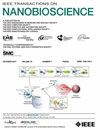Deep Learning for the Accurate Prediction of Triggered Drug Delivery
IF 4.4
4区 生物学
Q1 BIOCHEMICAL RESEARCH METHODS
引用次数: 0
Abstract
The need to mitigate the adverse effects of chemotherapy has driven the exploration of innovative drug delivery approaches. One emerging trend in cancer treatment is the utilization of Drug Delivery Systems (DDSs), facilitated by nanotechnology. Nanoparticles, ranging from 1 nm to 1000 nm, act as carriers for chemotherapeutic agents, enabling precise drug delivery. The triggered release of these agents is vital for advancing this novel drug delivery system. Our research investigated this multifaceted delivery capability using liposomes and metal organic frameworks as nanocarriers and utilizing all three targeting techniques: passive, active, and triggered. Liposomes are modified using targeting ligands to render them more targeted toward certain cancers. Moieties are conjugated to the surfaces of these nanocarriers to allow for their binding to receptors overexpressed on cancer cells, thus increasing the accumulation of the agent at the tumor site. A novel class of nanocarriers, namely metal organic frameworks, has emerged, showing promise in cancer treatment. Triggering techniques (both intrinsic and extrinsic) can be used to release therapeutic agents from nanoparticles, thus enhancing the efficacy of drug delivery. In this study, we develop a predictive model combining experimental measurements with deep learning techniques. The model accurately predicts drug release from liposomes and MOFs under various conditions, including low- and high-frequency ultrasound (extrinsic triggering), microwave exposure (extrinsic triggering), ultraviolet light exposure (extrinsic triggering), and different pH levels (intrinsic triggering). The deep learning-based predictions significantly outperform linear predictions, proving the utility of advanced computational methods in drug delivery. Our findings demonstrate the potential of these nanocarriers and highlight the efficacy of deep learning models in predicting drug release behavior, paving the way for enhanced cancer treatment strategies.深度学习用于触发式给药的精确预测
减轻化疗不良反应的需求推动了对创新给药方法的探索。癌症治疗的一个新趋势是利用纳米技术的药物输送系统(DDS)。从 1 纳米到 1000 纳米的纳米颗粒可作为化疗药物的载体,实现精确给药。这些药物的触发释放对于推进这种新型给药系统至关重要。我们的研究使用脂质体和金属有机框架作为纳米载体,并利用被动、主动和触发三种靶向技术,对这种多方面的给药能力进行了研究。利用靶向配体对脂质体进行修饰,使其对某些癌症更具靶向性。在这些纳米载体的表面共轭一些配体,使其能够与癌细胞上过度表达的受体结合,从而增加药剂在肿瘤部位的积累。一种新型的纳米载体,即金属有机框架,已经出现,并在癌症治疗中大有可为。触发技术(内在和外在)可用于从纳米颗粒中释放治疗药物,从而提高给药效果。在本研究中,我们结合实验测量和深度学习技术开发了一个预测模型。该模型能准确预测脂质体和 MOFs 在各种条件下的药物释放,包括低频和高频超声(外触发)、微波照射(外触发)、紫外线照射(外触发)和不同 pH 值(内触发)。基于深度学习的预测结果明显优于线性预测结果,证明了先进计算方法在药物输送方面的实用性。我们的研究结果证明了这些纳米载体的潜力,并突出了深度学习模型在预测药物释放行为方面的功效,为增强癌症治疗策略铺平了道路。
本文章由计算机程序翻译,如有差异,请以英文原文为准。
求助全文
约1分钟内获得全文
求助全文
来源期刊

IEEE Transactions on NanoBioscience
工程技术-纳米科技
CiteScore
7.00
自引率
5.10%
发文量
197
审稿时长
>12 weeks
期刊介绍:
The IEEE Transactions on NanoBioscience reports on original, innovative and interdisciplinary work on all aspects of molecular systems, cellular systems, and tissues (including molecular electronics). Topics covered in the journal focus on a broad spectrum of aspects, both on foundations and on applications. Specifically, methods and techniques, experimental aspects, design and implementation, instrumentation and laboratory equipment, clinical aspects, hardware and software data acquisition and analysis and computer based modelling are covered (based on traditional or high performance computing - parallel computers or computer networks).
 求助内容:
求助内容: 应助结果提醒方式:
应助结果提醒方式:


